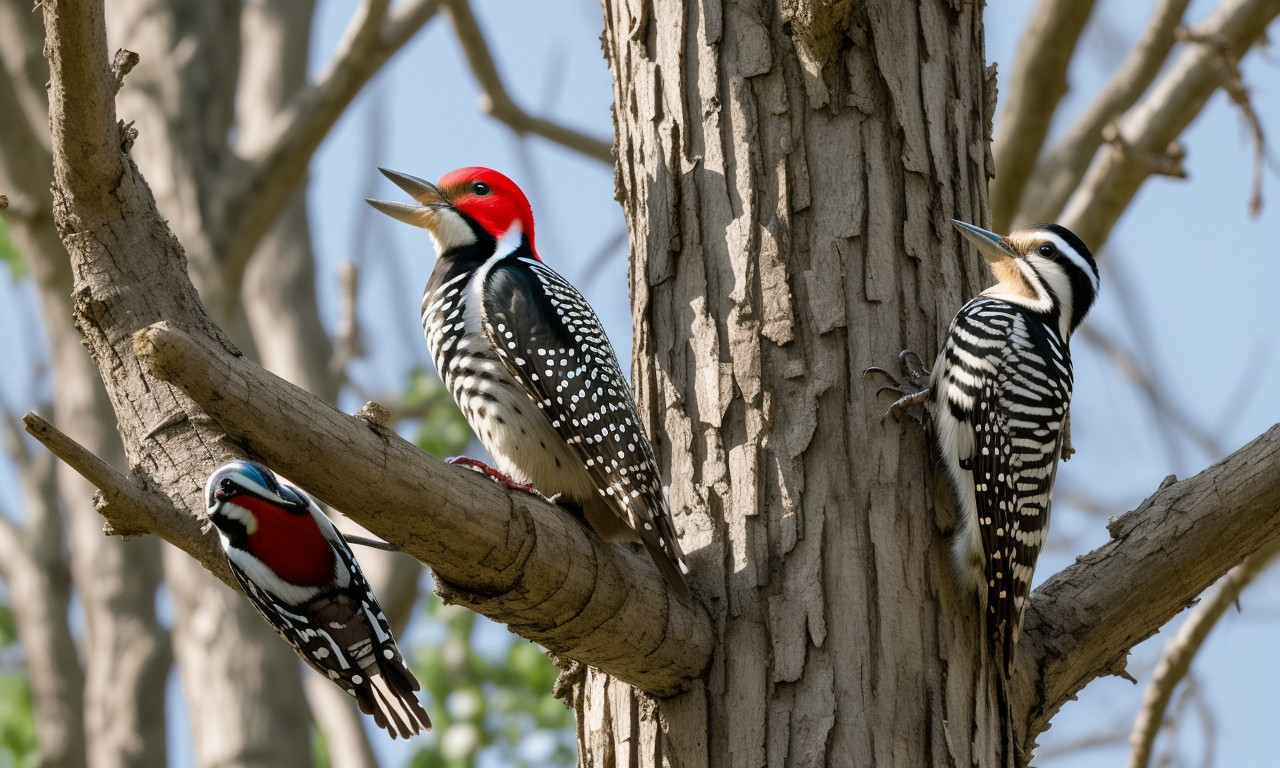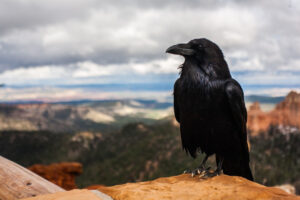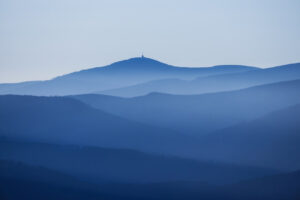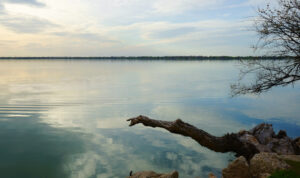Indiana’s woodlands resonate with the rhythmic tapping and drumming of woodpeckers—a sound that has become synonymous with the state’s natural heritage. These enchanting birds, with their sharp beaks and distinct markings, are not only a sight to behold but also play a vital role in the ecosystem of Hoosier woods. This in-depth exploration seeks to uncover the secret world of woodpeckers in Indiana, inviting you to discover the beauty and complexity of these forest dwellers.
The woodlands of Indiana serve as an ideal backdrop for the diverse behaviors and ecology of various woodpecker species. As we venture through the forests, we will unveil the unique traits and habits that make woodpeckers in Indiana truly remarkable creatures.
Unveiling Indiana’s Woodpecker Species
Before diving deep into the heart of woodpecker behavior and habits, let us acquaint ourselves with the key players. Indiana is home to several woodpecker species, each with distinct characteristics and adaptations that allow them to thrive in their Hoosier habitat.
Related article; woodpeckers in iowa
The Downy Woodpecker: Indiana’s Petite Drummer
The Downy Woodpecker, affectionately known as the "Pocket-sized Percussionist," is the smallest woodpecker in Indiana. Its size is deceptive, as its drilling prowess is truly remarkable. Spotting a Downy Woodpecker is a delight, with its black-and-white checkered pattern and the characteristic red patch on the back of the male’s head.
Related article; illinois hawk
The Red-Headed Woodpecker: A Flash of Crimson
Instantly recognizable by its bold red head and neck, the Red-Headed Woodpecker is a visual treat. These woodpeckers have a fondness for open woodlands, where they can be seen flying acrobatically to catch insects in mid-air—a show of agility and precision.
Related article; hawks of oklahoma
The Pileated Woodpecker: The Forest’s Crowned Giant
Known as the "Lord of the Woodpeckers," the Pileated Woodpecker is the largest woodpecker in Indiana. Its striking appearance, complete with a red crest and a black body with white stripes, commands respect. The echoing sound of its pecking can be heard far and wide, signaling its presence in the woods.
Related article; sparrows in michigan
The Role of Woodpeckers in Indiana’s Ecosystem
Understanding the ecological significance of woodpeckers reveals the depth of their contribution to Indiana’s woodlands. These birds are more than just a charming sight; they are pivotal players in maintaining the health and balance of their environment.
Related article; hawks of virginia
Architects of the Forest: Woodpecker Cavities
Woodpeckers are renowned for their incomparable skill at excavating cavities in trees. These nooks serve as nesting sites for the birds themselves and provide critical shelter for a host of other species. By creating these cavities, woodpeckers inadvertently give rise to a thriving community of forest denizens that rely on such habitation.
Related article; hawks in az
Pest Control Agents: A Natural Solution
The diet of a woodpecker is a boon to the forests, as these birds voraciously consume insects that might otherwise overrun the ecosystem. Beetles, ants, and tree borers often fall prey to the relentless pecking of woodpeckers, keeping populations in check and preventing widespread tree damage.
Related article; florida falcons birds
The Secret Behind Their Pecking: An Examination of Woodpecker Behavior
With their iconic pecking, woodpeckers have captivated the interest of many nature enthusiasts. This behavior, while mightily impressive, is not merely for show—it is a complex activity driven by various motivations and facilitated by remarkable physiology.
Related article; hawks of new mexico
The Purpose of Pecking: From Feeding to Communication
Woodpecker pecking serves multiple purposes—food acquisition, territory marking, and mate attraction. Each peck is a message, a declaration of presence, or a diligent quest for nourishment.
Built for the Beat: The Anatomy of a Woodpecker
Woodpeckers possess specialized structures—from their strongly reinforced skulls to their shock-absorbing beaks—that enable them to withstand the intense impact of pecking. Their feet, with two toes pointing forward and two backward, provide a secure grip on tree trunks, making them adept at ascending vertical surfaces.
Protecting Indiana’s Woodpeckers: Conservation and Challenges
Despite their resilience and adaptability, woodpeckers in Indiana face various threats. Habitat loss, changes in land use, and environmental challenges have led to concerns about the preservation of these remarkable birds.
Conserving Woodpecker Habitats: Efforts and Strategies
To protect Indiana’s woodpeckers, concerted efforts are underway to conserve the woodlands and promote practices that support robust bird populations. This involves safeguarding mature forests that are rich in food resources and nesting opportunities while also encouraging responsible forest management.
Encountering Woodpeckers Responsibly: Ethical Birdwatching
For those who wish to observe woodpeckers in their natural environment, ethical birdwatching is paramount. Maintaining a respectful distance, using binoculars for up-close views, and avoiding disruption to woodpecker activity are crucial steps in ensuring these birds continue to flourish.
Indiana’s Woodpeckers Through the Seasons: A Year-Round Spectacle
The life of a woodpecker in Indiana is attuned to the changing seasons, each bringing its own set of behaviors and challenges. From the hustle of spring nesting to the quietude of winter survival, woodpeckers exhibit an impressive ability to adapt and endure.
Spring and Summer: The Breeding Season
During the warmer months, woodpeckers are actively engaged in breeding rituals—from courtship drumming to chick rearing. This is a time of lively interaction and communal living, with young woodpeckers learning the ropes of survival in Indiana’s woods.
Autumn and Winter: Preparation and Perseverance
As the leaves fall and temperatures drop, woodpeckers shift their focus to preparing for the hardships of winter. Food storage becomes a priority, and many species will stash away seeds and insects in tree crevices for later consumption. Despite the chill, the steadfast tapping of woodpeckers continues to punctuate the quiet, snow-laden forests.
The Joy of Spotting Woodpeckers in Indiana: Tips and Prime Locations
Indiana offers an abundance of prime locations for woodpecker observation, providing bird enthusiasts with ample opportunities to witness these masters of the forest. Here are some tips and hotspots for those eager to embark on a woodpecker watching adventure.
Birdwatching Tips: Maximizing Your Woodpecker Encounter
- Dawn and Dusk: Woodpeckers are most active during the early morning and late afternoon. Plan your birdwatching expeditions around these times for the best chances of a sighting.
- Quiet Observation: Keep noise to a minimum and move gently to avoid startling the birds. Silence and stillness are your allies when it comes to spotting woodpeckers.
- Seasonal Considerations: Be mindful of the breeding and nesting seasons, as woodpeckers may be more secretive during these periods. Observation from a distance is recommended to prevent any disturbance to their important life cycles.
Indiana’s Hotspots for Woodpecker Watching
Local parks, state reserves, and national forests in Indiana are havens for woodpecker species. Some of the most popular spots include:
- Brown County State Park: A picturesque setting with ample tree cover, perfect for encountering a variety of woodpecker species.
- Hoosier National Forest: Expansive and diverse, this area offers a higher likelihood of spotting the imposing Pileated Woodpecker.
- Eagle Creek Park: Easily accessible and rich in bird life, this park is a great starting point for beginners and seasoned birdwatchers alike.
Conclusion: Celebrating the Woodpeckers of Indiana
In Indiana, the melodious beat of woodpecker pecking is more than just background noise—it’s the soundtrack of a complex and thriving bird species. As we reflect on the contribution of woodpeckers to the beauty and health of Hoosier woodlands, let us remember the importance of preserving these charismatic creatures and their habitats. By understanding and valuing woodpeckers, we honor Indiana’s natural legacy and ensure that the rhythmic pecking will continue to echo through the forests for generations to come.




